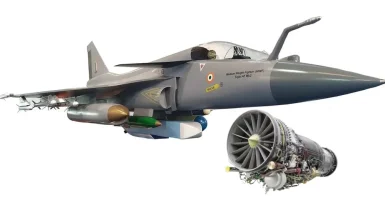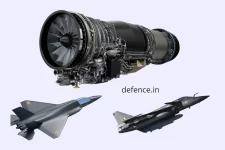- Views: 3K
- Replies: 12

India's next-generation Tejas Mk2 fighter jet will be significantly harder for enemy radar to detect than its predecessor, according to a key official overseeing the project.
Dr. V. Madhusudana Rao, Project Director for the Mk2 program at the Aeronautical Development Agency (ADA), stated recently that the aircraft's frontal Radar Cross Section (RCS) is just 25% of that of the Tejas Mk1A. This represents a major improvement in the aircraft's stealth capabilities.
Radar Cross Section (RCS) is a measure of how detectable an object is by radar. A smaller RCS means the object reflects less radar energy, making it harder to detect.
"The Tejas Mk2 achieves an RCS of just one-fourth" of the Mk1A, Dr. Rao explained. This substantial reduction is the result of a comprehensive redesign by the ADA and Hindustan Aeronautics Limited (HAL).
The Mk2 utilizes several techniques to minimize its radar signature, including the application of radar-absorbent materials (RAM), extensive use of composite materials (which constitute 90% of the aircraft's surface), and a redesigned airframe that incorporates features like specially shaped air intake ducts and close-coupled canards (small forewings).
While not a fully "stealth" aircraft in the same category as, for example, the American F-35, this improvement significantly enhances the Mk2's survivability in combat situations.
The reduced RCS is particularly important in modern aerial combat, where engagements often occur beyond visual range (BVR). A lower RCS gives the Tejas Mk2 a crucial advantage by making it more difficult for enemy radar systems to detect, track, and target the aircraft.
This aligns with online discussions among defence analysts, highlighting that the Mk2's design was approached with stealth in mind from the outset, making it almost an entirely new aircraft compared to the Mk1A.
The Mk2 is also classified as a Medium Weight Fighter, reflecting its larger size, increased payload capacity (6,500 kg), and a more powerful GE F414 engine (generating 98 kN of thrust).
The Tejas Mk2 program is also focused on efficient production. Dr. Rao highlighted the aircraft's highly modular design, which will allow HAL to potentially manufacture up to 25 aircraft per year.
HAL is already expanding its production capacity, aiming for 24 aircraft annually across three assembly lines. This focus on scalability is intended to meet India's domestic needs and potentially position the country as an exporter of the fighter jet.
While the development has faced some schedule adjustments due to delays in the delivery of the GE F414 engines, progress continues. The rollout of the first prototype is now anticipated in 2025, with the first flight expected in late 2025 or early 2026.
Dr. Rao reported that over half of the prototype's components, including the wings and forward fuselage, have already been manufactured.
The Indian government's Cabinet Committee on Security approved funding of approximately ₹10,000 crore (about $1.2 billion USD) in 2022, with research and development expected to be completed by December 2027. The aircraft is planned to be operationally ready by 2028.
Beyond its stealth improvements, the Mk2 will feature a state-of-the-art avionics suite. This includes the indigenously developed Uttam Active Electronically Scanned Array (AESA) radar, an infrared search and track (IRST) system for passive target detection, and a comprehensive electronic warfare suite for self-protection.
The Mk2 also boasts double the mission endurance of the Mk1A (120 minutes) and can carry eight BVR missiles.
The aircraft is intended to replace older Indian Air Force (IAF) fighters like the Mirage 2000 and MiG-29, and there is reportedly interest from over 16 countries in potentially purchasing the Tejas Mk2.


